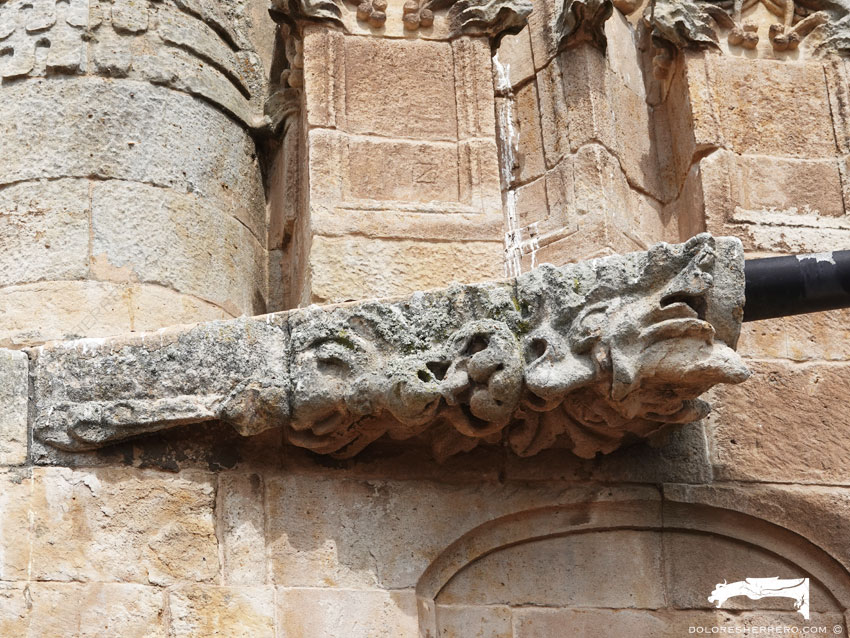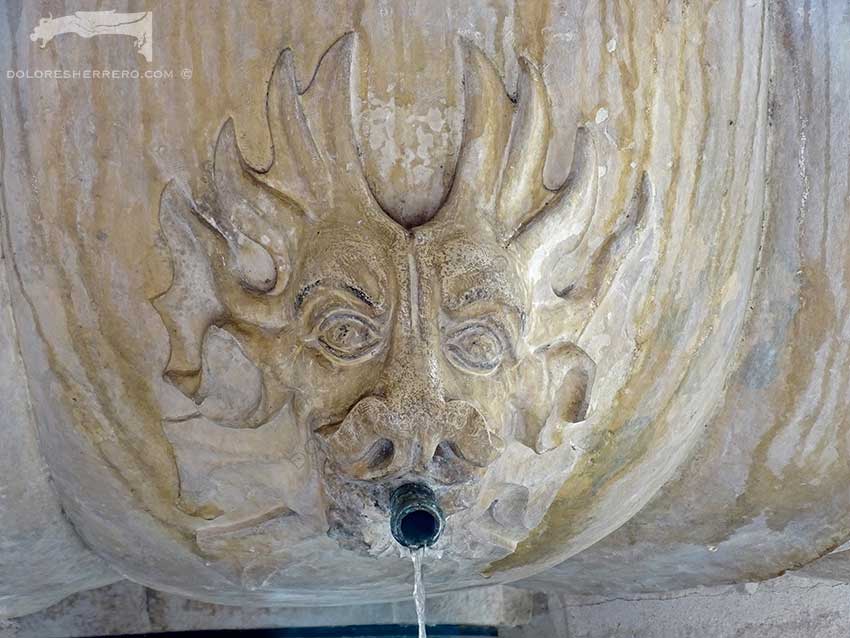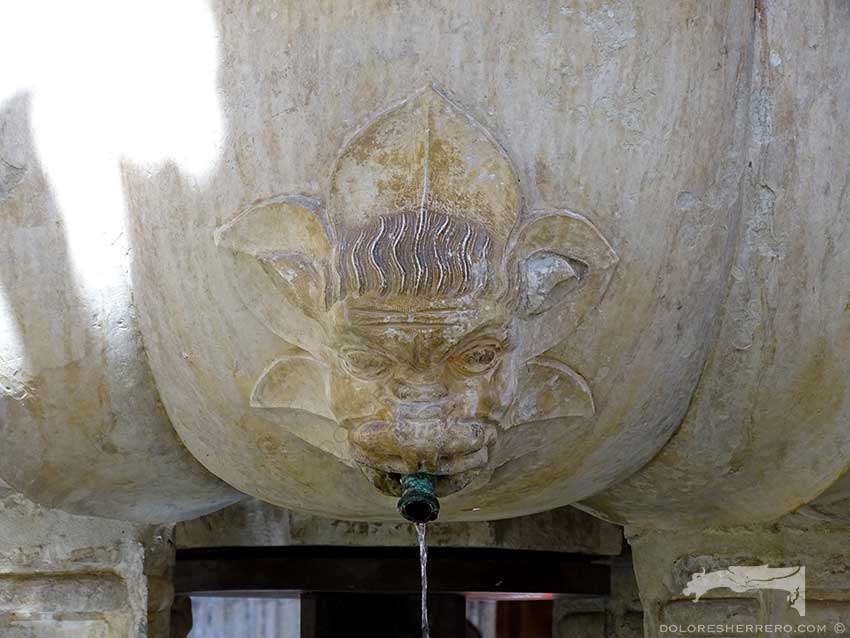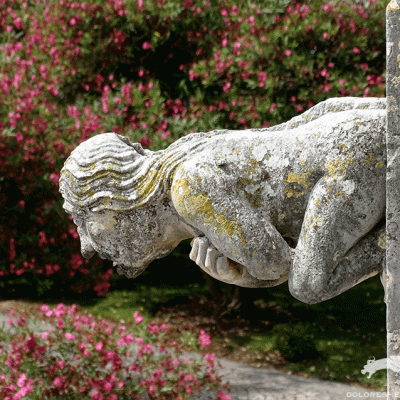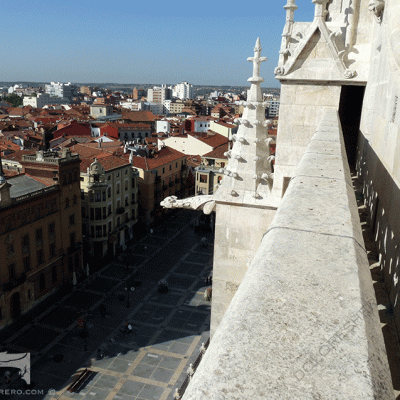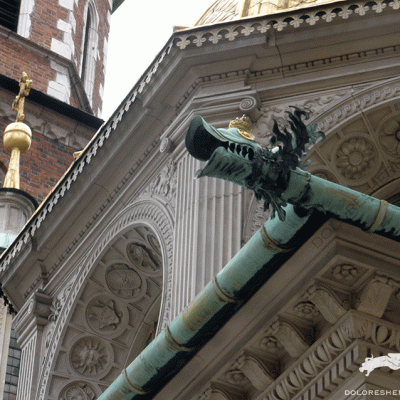From time to time, you come across unusual gargoyles, figures with heads and faces that look different. They’re not common, which just makes them all the more surprising and fascinating. We are referring here to gargoyles with mask-like faces, or which are holding a mask as a significant element of the figure.
Let’s look at some ideas about the meaning of masks in history and art. Grotesque faces depicted in art often evoke masks. These superficial coverings seem to conceal reality, and mocking or sarcastic masks were often used in mediaeval feasts (Feast of Fools, Carnival). People in the Middle Ages knew about masks in antiquity thanks to the works of Terence (second century BC) and to sarcophagi. Masked gorgons appeared in classical coats of arms, used as an apotropaic or protective image. Michael Camille has contended that these might have had a different meaning in the Middle Ages, indicating danger in a similar way to the faces that appear on the stomach or genitals of devils.
With its frequently mask-like appearance, there is one image above all that seems linked to gargoyles due to its similarity to some of them. This is the green man, who is depicted with a human head surrounded by leaves and branches which sometimes even sprout from his mouth or nose. The green man is a symbol of fertility, rebirth and nature inherited from pagan imagery that was subsequently appropriated by Christianity as a symbol of lust and other capital sins. Leafy masks and heads surrounded by lush vegetation appeared in the classical period in relation to the cult of Dionysus, who was worshipped as the god of fertility and vegetation. Later, he acquired funerary connotations, becoming a symbol of immortality or resurrection.
In addition, some of the gargoyles in the Cathedral of Salamanca present the appearance of what we have called the “plant monster”. These have marvellous plant ornamentation with monstrous or devil-like elements, where leaves and flowers form facial features, spirals, horns and wings, and sometimes the leaves form mask-like faces.
To conclude, we want to show you two beautiful masks from the lavabo at the Monastery of Batalha, where there are faces that look like the green man. Masks with grotesque faces were widely used in Gothic sculpture and other arts due to the influence of Villard d’Honnecourt, who revived the Graeco-Roman tradition of plant masks. Many of the heads with leaves may have their origins in the head of Silvanus, and their hair, beards and even faces are transformed into plants filling the space, similar to the Renaissance grotesque. The hair and beards are almost always formed of leaves that entwine among all the other elements.
Gargoyles and Grotesque Masks
- San Martín Pinario Monastery (Santiago de Compostela, Spain)
- Lonja in Valencia (Spain)
- Palencia Cathedral (Spain)
- Salamanca Cathedral (Spain)
- Mask. Batalha Monastery (Portugal)
- Mask. Batalha Monastery (Portugal)
Bibliography consulted
CAMILLE, M., Image on the Edge. The Margins of Medieval Art, London, Reaktion Books Ltd., 2008.
GARCÍA VEGA, B., El Grabado del Libro Español. Siglos XV-XVI-XVII. (Aportación a su estudio con los fondos de las bibliotecas de Valladolid), Tomos I y II, Valladolid, Institución Cultural Simancas. Diputación Provincial de Valladolid, 1984.
KENAAN-KEDAR, N. y OVADIAH, A., The Metamorphosis of Marginal Images: From Antiquity to Present Time, Tel Aviv University. The Yolanda and David Katz Faculty of the Arts. Department of Art History, 2001.
REBOLD BENTON, J., Holy Terrors. Gargoyles on medieval buildings, New York, Abbeville Press, 1997.

Doctor of Art History and researcher specializing in the study of gargoyles.
I am Dolores Herrero Ferrio, and my thesis, “An Approach to the Study of Gargoyles of Gothic Cathedrals in Castilla and León”, is dedicated to the study of these fascinating figures.
If you like gargoyles and art history, you will also enjoy my book, “The Gargoyle and Its Iconography,” a book I have written with great care for those interested in the world of gargoyles.
I have created my own Encyclopedia of Gargoyles, a Gargopedia to share with you, where you will discover all the secrets and wonders of these enigmatic sculptures.
I hope you enjoy this Gargopedia as much as I have enjoyed creating it, and remember that each gargoyle has a story to tell, and here you will discover them all.



